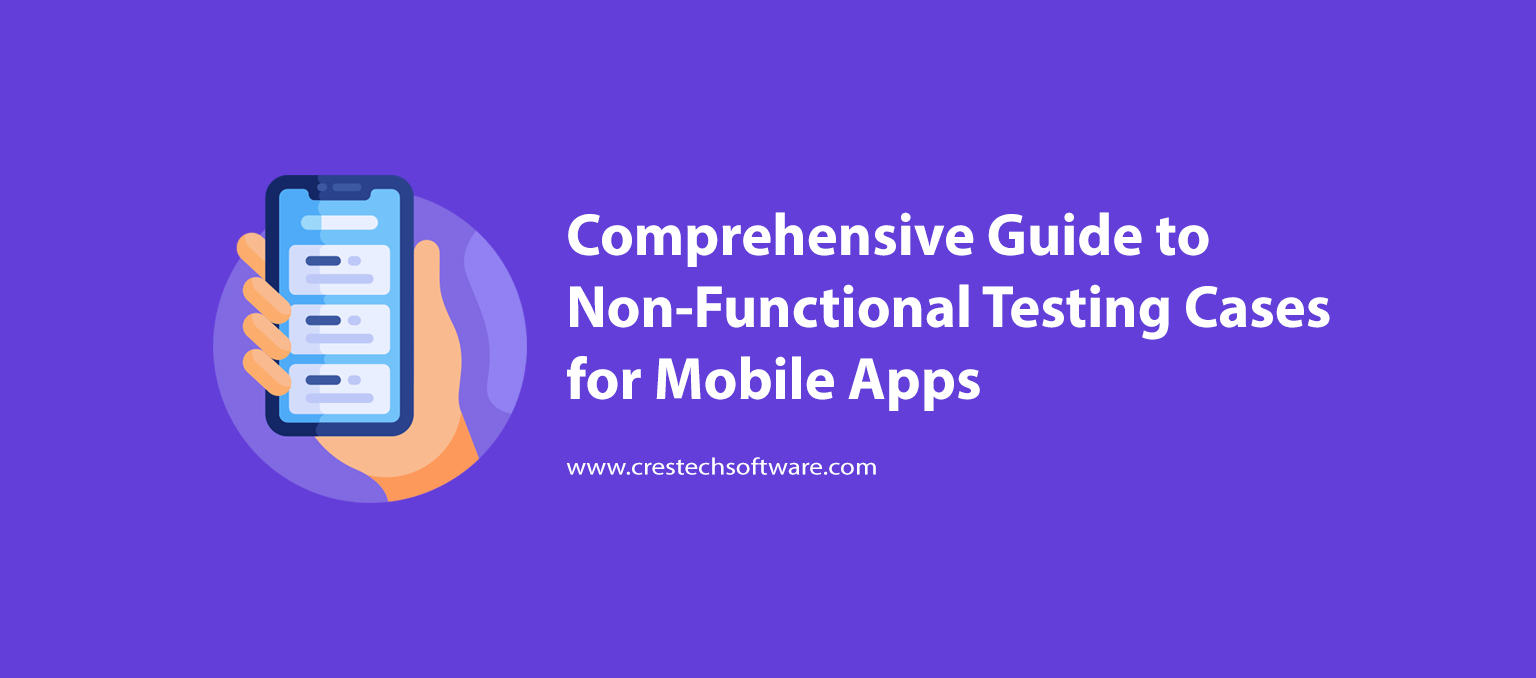Mobile applications have become an integral part of our daily lives, serving various purposes from communication to entertainment and productivity. As the demand for mobile apps continues to rise, ensuring their optimal performance becomes paramount. Non-functional testing plays a crucial role in assessing aspects beyond functionality, including performance, usability, reliability, and security.
In this blog, we will delve into a comprehensive exploration of non-functional testing cases for mobile apps to guarantee a seamless user experience.
1. Performance Testing:
a. Load Testing:
- Assess the app’s response under normal and peak loads.
- Simulate concurrent user activities to determine the breaking point.
- Analyze server and network performance to ensure scalability.
b. Stress Testing:
- Evaluate the app’s behavior under extreme conditions.
- Identify system vulnerabilities and potential failure points.
- Gauge the app’s ability to recover gracefully after stress events.
c. Scalability Testing:
- Examine the app’s performance as user numbers increase.
- Verify that the app can scale horizontally or vertically.
- Assess resource allocation and usage efficiency.
2. Usability Testing:
a. User Interface (UI) Testing:
- Evaluate the app’s visual appeal and consistency.
- Verify that UI elements are responsive and aligned properly.
- Ensure compatibility with various device resolutions and screen sizes.
b. User Experience (UX) Testing:
- Assess the overall flow and intuitiveness of the app.
- Validate navigation and accessibility features.
- Gather user feedback on the app’s ease of use.
c. Accessibility Testing:
- Confirm compliance with accessibility standards (e.g., WCAG).
- Evaluate the app’s usability for users with disabilities.
- Ensure compatibility with screen readers and other assistive technologies.
3. Reliability Testing:
a. Stability Testing:
- Evaluate the app’s ability to remain stable over extended periods.
- Identify memory leaks, crashes, and unexpected shutdowns.
- Test the app’s resilience to intermittent network connectivity.
b. Recovery Testing:
- Simulate unexpected interruptions (e.g., phone calls, low battery).
- Assess the app’s recovery time and data integrity after interruptions.
- Validate that the app can resume normal functionality seamlessly.
c. Error Handling Testing:
- Verify the app’s response to user input errors.
- Test error messages for clarity and user guidance.
- Ensure the app gracefully handles unexpected errors without crashing.
4. Security Testing:
a. Data Encryption Testing:
- Confirm that sensitive data is encrypted during transmission.
- Verify secure storage practices for user credentials and personal information.
- Assess the app’s resistance to data breaches and unauthorized access.
b. Penetration Testing:
- Identify and rectify vulnerabilities by simulating real-world cyber-attacks.
- Test for potential exploits in the app’s code and infrastructure.
- Validate the effectiveness of security mechanisms in place.
c. Authentication and Authorization Testing:
- Verify the robustness of user authentication processes.
- Assess the accuracy of user role-based access controls.
- Ensure secure session management and token handling.
Non-functional software testing is indispensable for delivering a mobile app that not only meets functional requirements but also excels in terms of performance, usability, reliability, and security. By incorporating the aforementioned testing cases into the development lifecycle, developers can build robust, user-friendly, and secure mobile applications that stand up to the demands of today’s dynamic digital landscape. As mobile technology continues to advance, the importance of comprehensive non-functional testing cannot be overstated, ensuring a positive user experience and maintaining the credibility of mobile apps in an ever-evolving market.


